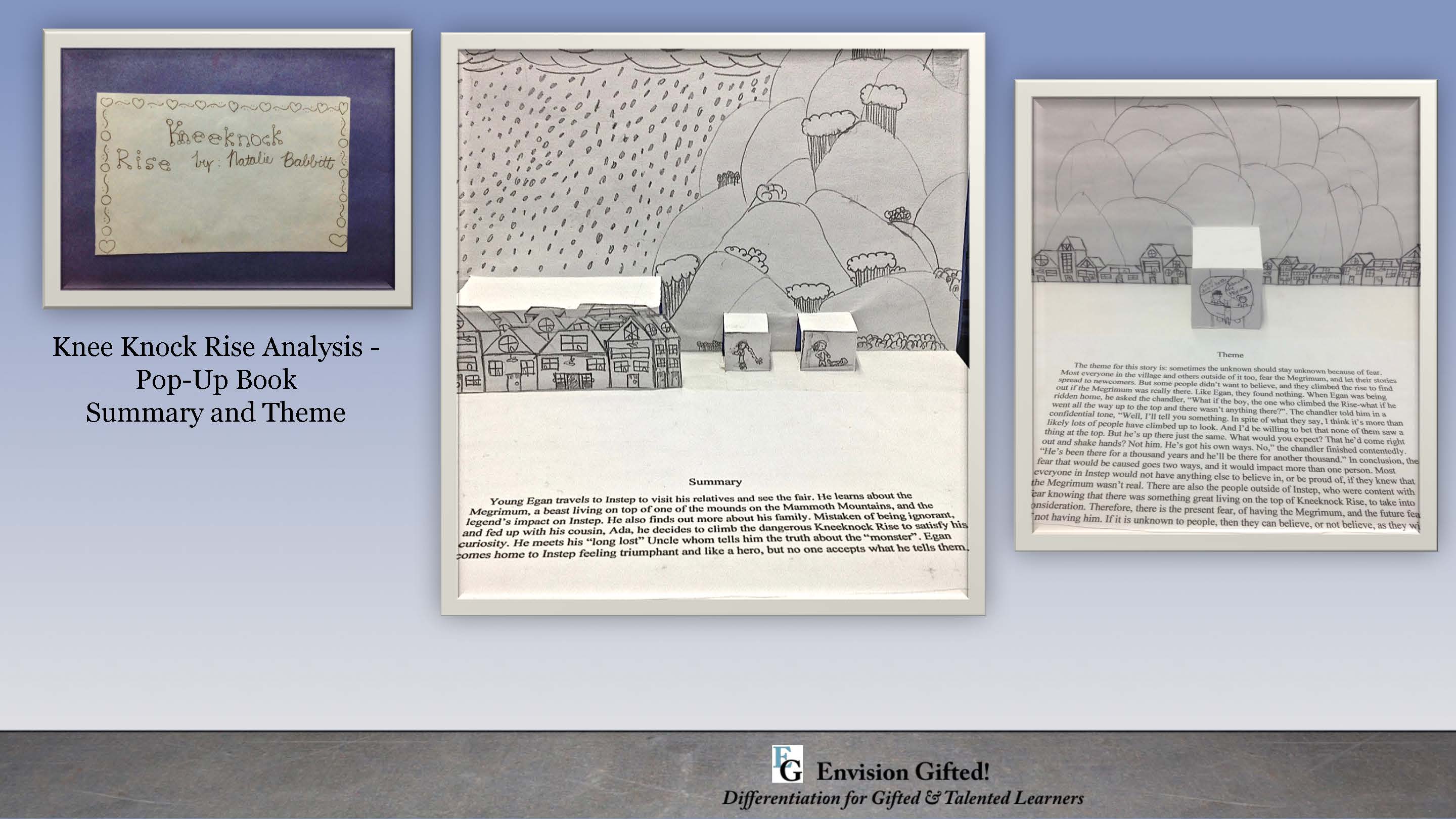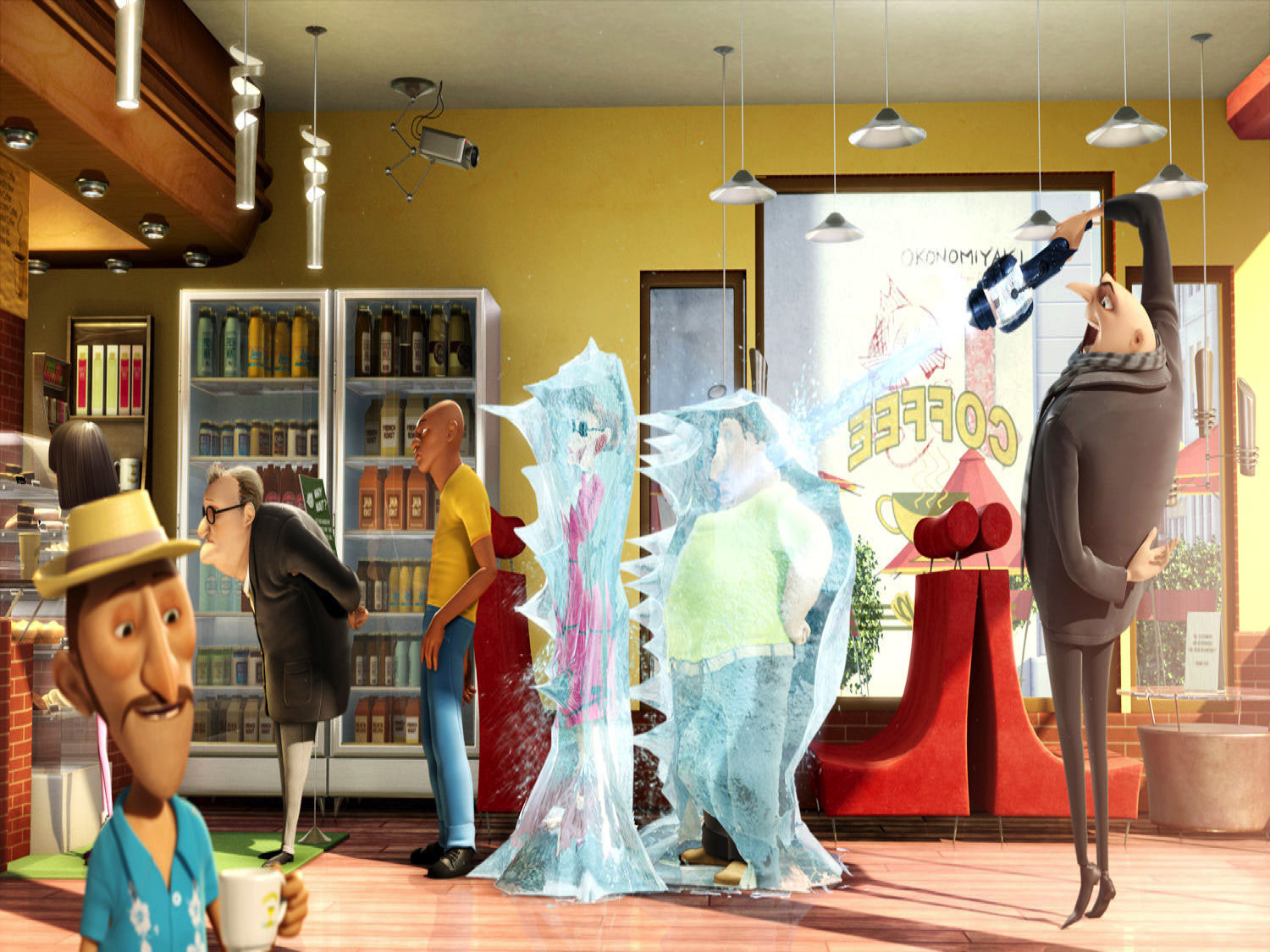Language arts is a fairly broad topic. Although text book publishers say they offer “challenge” materials for gifted and advanced students, many times, those resources simply aren’t adequate for our students. Therefore it is imperative that we further differentiate language arts for our gifted and advanced students.
Differentiating Language Arts Using Patterns to find the Lesson in a Story
Use Patterns to Discover the Lesson in a Story.
Anchor Standard R.2- calls for students to “Determine central ideas or themes of a text and analyze their and analyze their development; summarize the key supporting details and ideas”. The brain is a natural pattern seeker. This icon creates a nice pathway to determine the big idea. It also facilitates citing evidence. Students can look back from the big idea and ask themselves if the evidence in the circles of the pattern support their big idea.
 Knee Knock Rise
Knee Knock Rise
Knee Knock Rise Analysis- Different End Product
Using Images to Hook and Model Making Judgements About Story Characters
Using instructional hooks can be very engaging for the students (and the teacher). Although it takes some thought and planning to search for just the right image, the payoff is worth the effort. High student engagement translates into learning.
In this lesson, I used a few pictures from the film, Despicable Me. The use of these were twofold, as the character changes so drastically in the story (I would tap into that concept later). It isn’t necessary for students to see the movie if you choose the images carefully. Just like reading written text, when students read an image they must cite textual evidence.
The Lesson-
The Big Idea (Making Judgments) is defined and the objective is introduced at the start of the lesson. The example (right) was used as part of a gradual release model of instruction. Students then took their learning to the story in the anthology.
Download Resources For this Lesson:
Making Judgments about Story Characters
Making Judgments big idea and obj
Making Judgments about Story Characters Gru at Beg. Example
Differentiating Language Arts- Author’s Viewpoint
 Sometimes an author lets the reader know how they feel about something or someone by the things their story characters say or do.
Sometimes an author lets the reader know how they feel about something or someone by the things their story characters say or do.
Students use depth and complexity to help them arrive at the author’s viewpoint. They analyze the dialogue from the story along with the details of the character’s behavior.







